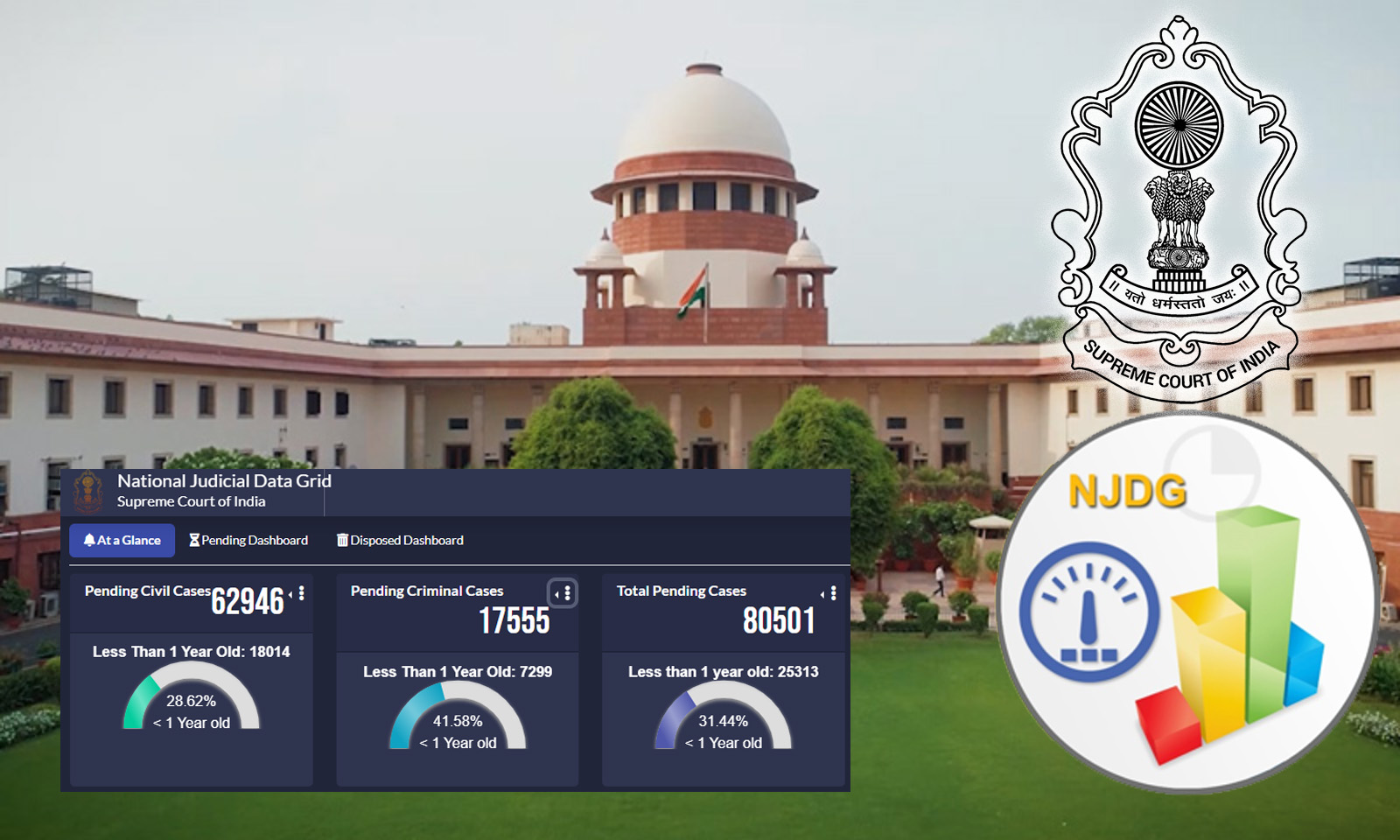
National Judicial Data Grid Portal
What is
“National Judicial Data Grid Portal”
This topic is related to Current Affairs of IAS/PCS Prelims Exam and Mains Exam General Studies Question Paper 2 Indian Polity.
September 16, 2023
In News:
- The Supreme Court has recently included data related to various judicial cases in the National Judicial Data Grid portal.
- National Judicial Data Grid Portal has been launched by courts across the country on September 14, 2023.
- This portal is a national repository of data related to pending and settled cases.
About National Judicial Data Grid Portal:
- NJDG is a database of orders, judgments and case details of 18,735 District and Subordinate Courts and High Courts, created as an online platform under the e-Courts Project.
- The main feature of this portal is that the data is updated in real time and has detailed data up to the taluka level.
- According to Chief Justice of India DY Chandrachud, "Inclusion of Supreme Court data on the NJDG portal under the open data policy is an important step on our part to bring transparency and accountability in the judicial sector."
What is National Judicial Data Grid?
- NJDG was created as part of Phase II of the e-Courts project, a centrally sponsored scheme.
- With computerization of more than 18,735 courts across the country, the data is integrated with NJDG.
- The platform has been developed by the National Informatics Center (NIC) in close coordination with the in-house software development team of the Computer Cell, Supreme Court Registry with an interactive interface and analytics dashboard.
- Presently, litigants can access status information of 23.81 crore cases and more than 23.02 crore orders/judgments from this grid.
Significance :
- It serves as a monitoring tool to identify, manage and reduce the pendency of NJDG cases.
- It also helps in identifying specific obstacles in judicial processes. For example, if the number of land disputes increases in a particular state, this helps policy makers to see if the law needs to be strengthened.
- It provides data tools to the courts to reorganize the data and dispose of the oldest cases.
- It also helps in generating inputs related to particular areas of law. For example, to track cases related to land disputes, land records data of 26 states has been linked with NJDG.
- It will increase transparency.
- This will ensure accountability and responsibility in the functioning of the court.
- It will create better efficiency in the judicial system.
- It will increase coordination.
- It will help in taking quick and effective decisions.
- Its use will ensure maximum deployment of resources and manpower.
- Cases pending in Supreme Court:
- The total number of cases pending in the Supreme Court by the year 2023 is 64,854.
- In August 2023, 5,412 cases were filed in the Supreme Court and 5033 cases were disposed of.
- In the Supreme Court, 583 cases are pending before the three-judge bench, 288 cases before the five-judge bench, 21 cases before the seven-judge bench and 135 cases before the nine-judge bench, all of which are civil cases.
About e-Court National Portal:
- The e-Court National Portal was launched on 7 August 2013.
- This portal provides data related to case status, daily cause-list, cases filed and registered cases through Case Information System.
--------------------------------------
Mains Exam Question
The National Judicial Data Grid Portal will ensure transparency and accountability in the functioning of the courts of the country. Discuss.